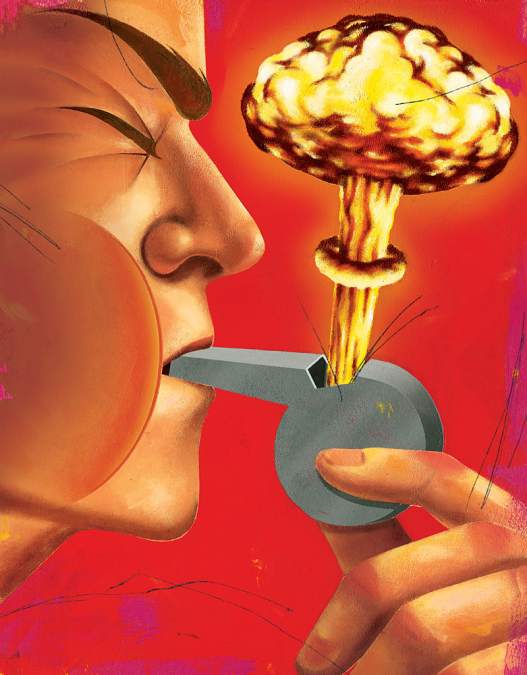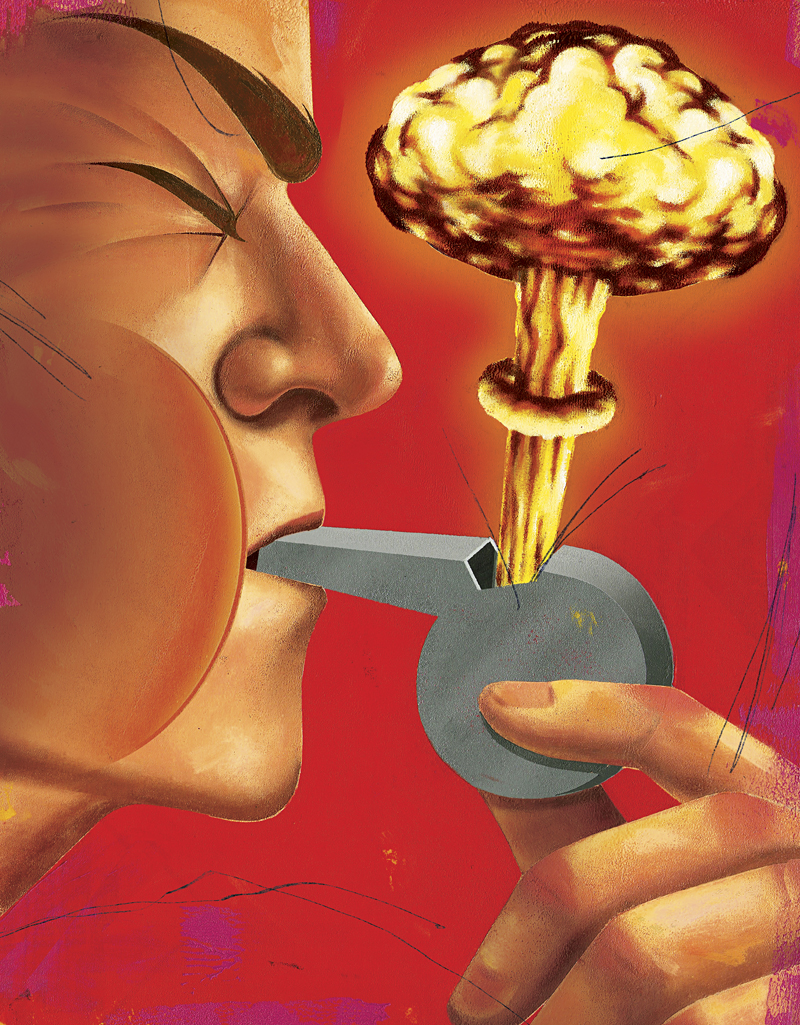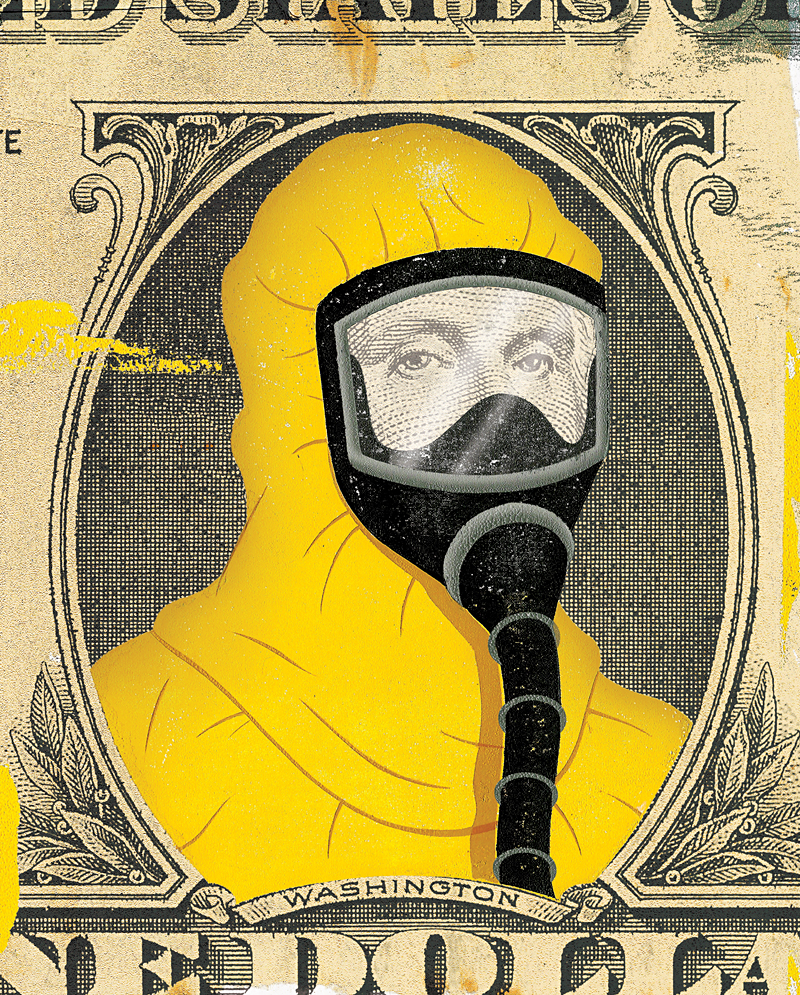A few years ago I wrote a two-part investigative series for Seattle Weekly on the mismanagement surrounding the environmental cleanup of the Hanford nuclear site, the costliest the world has ever seen.
A few brave whistleblowers, both Department of Energy employees and contractors, spoke with me on record about how the DOE is not only understaffed, but also not capable of dealing with such a massive cleanup. Likewise, they helped expose how their employers are wasting taxpayer dollars and jeopardizing public safety along the way.
One of the central figures in the saga I wrote about was whistleblower Dr. Walter Tamosaitis, a systems engineer who was employed for more than 40 years by Bechtel subcontractor URS. (Yes, that’s the same Bechtel that botched its fair share of Iraq reconstruction contracts.)
Tamosaitis claims he was removed from his position for citing concerns about safety failures at Hanford’s Tank Waste Treatment and Immobilization Plant (WTP). That facility is central to cleaning up Hanford, its ultimate goal to turn some 56 million gallons of radioactive gunk into glass rods.
Shortly after my first article appeared in Seattle Weekly, Tamosaitis filed a lawsuit against URS and the DOE, claiming he was demoted for speaking out. Here’s a snippet from the first piece detailing the episode:
[Walter Tamosaitis exposed] what he saw as safety failures at WTP and citing concerns that the pulse jet mixer design issues would prohibit the plant from operating correctly. As a result, Tamosaitis says he was removed from the project; Bechtel and URS both deny that they removed Tamosaitis because he raised safety concerns.
“The drive to stay on schedule is putting the whole [WTP] project at risk,” Tamosaitis contends. ” ‘Not on my watch’ is a standard mantra among [DOE and Contract] management who like to intimidate naysayers like me. These guys would rather deal with major issues down the road than fix them up front . . . Cost and schedule performance trump sound science time and again.”
On March 31, 2010, Tamosaitis e-mailed Bechtel managers Michael K. Robinson and [Frank] Russo about concerns about pulse jet mixer failures … to which Russo replied, “Please keep this under control. The science is over.” In an internal e-mail string dated April 14, 2010, Robinson writes to Russo that he will “just have to keep [Tamosaitis] in line.”
“As soon as Russo came on board, the chain of command was altered,” Tamosaitis says. “Before Russo, I had to report directly to Bill Gay, a URS employee, but Russo removed Gay from the command chain and [made me communicate] directly to Mike Robinson [of Bechtel]. I think Russo believed it was easier to drive ahead with his cost and schedule push if he didn’t have two URS managers directly under him.”
***
In an e-mail dated March 31, 2010, Russo updated President Obama appointee Ines Triay on the situation. Triay, who did not return calls seeking comment, served as Assistant Secretary for Environmental Management and oversaw the DOE’s Hanford work until July, at which time she stepped down.
“It was like herding cats,” Russo wrote Triay about a meeting he’d had with senior contract scientists and engineers regarding his quest to stay on schedule. “Scientists . . . were in lock step harmony when we told them the science is ending. They all hated it . . . I will send anyone on my team home if they demonstrate an unwillingness or inability to fulfill my direction.”
“Walt is killing us,” Russo later e-mailed Bill Gay of URS on July 1, 2010, who though removed from the chain of command still had to sign off on Tamosaitis’ removal.
“Get him in your corporate office today.”
“He will be gone tomorrow,” Gay replied.
Last year Tamosaitis was fired, and both his former employers and the DOE have tried to keep him silent and out of court.
But last week, the Ninth Circuit Court of Appeals ruled that Tamosaitis has a constitutional right to a jury trial, reversing a lower court’s decision. It’s been a long haul, but nearly three years later, Tamosaitis will now be able to seek damages under the Energy Reorganization Act in federal court when he has his case heard in front of a jury of his peers. You can read the Ninth Circuit’s ruling here.
A version of this story was originally published at CounterPunch.






